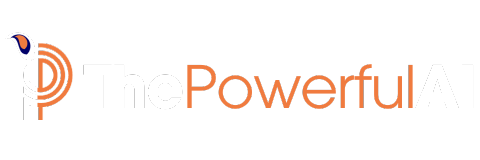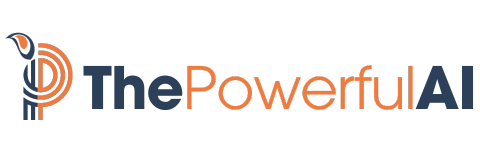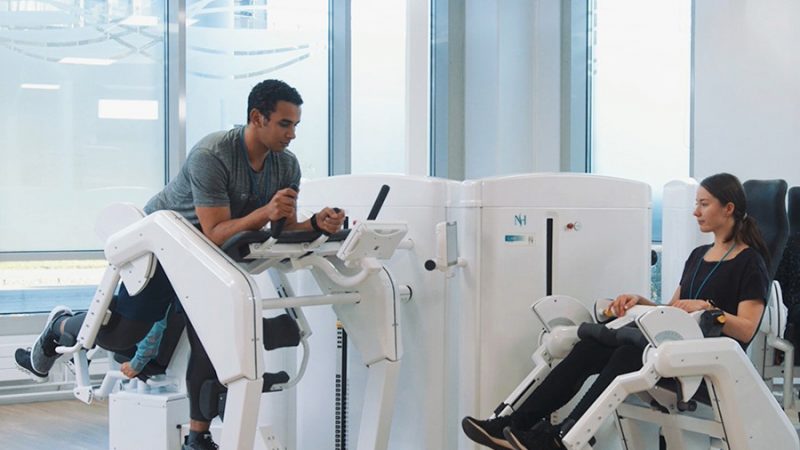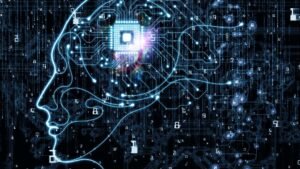Artificial intelligence (AI) in physical therapy uses patient data to create personalized rehabilitation plans based on real-time progress monitoring. It tailors regimens and adapts therapies to meet the unique needs and abilities of each individual, analyzing medical history, physical condition, and progress information.
This future technology enhances rehabilitation and helps prevent injuries. In addition to AI, augmented reality (AR) and virtual reality (VR) technologies are also transforming physical therapy by creating immersive and engaging experiences for patients. These technologies simulate real-life scenarios and make rehabilitation exercises more interactive and enjoyable.
AI therapy tools can assist therapists through thought recordings, journal entry analysis, well-being activities, CBT interventions, and chat sessions. Furthermore, AI contributes to improving overall physical healthcare outcomes by facilitating early disease detection and personalized treatment plans.
The Future Of Artificial Intelligence In Physical Therapy
The future of artificial intelligence in physical therapy holds immense potential. AI will revolutionize the field by utilizing patient data to create personalized rehabilitation plans, continuously adapting therapies based on real-time progress monitoring. Augmented reality and virtual reality technologies will enhance the patient experience, making rehabilitation exercises more engaging and interactive.
AI will also assist therapists in analyzing journal entries, providing well-being activities, and facilitating chat sessions for improved mental health. With AI’s advancements, physical therapy will become more efficient, effective, and tailored to individual needs.
Enhanced Learning
Artificial Intelligence (AI) is revolutionizing the field of physical therapy, and one of its key advantages is enhanced learning. Through AI-powered technologies, physical therapists can access a vast amount of knowledge and expertise at their fingertips. AI algorithms can analyze and interpret medical literature, research papers, and case studies to provide therapists with up-to-date information and evidence-based treatment protocols. This enhanced learning capability allows therapists to stay on top of the latest advancements in the field and provide the most effective care to their patients. Additionally, AI can be used to develop interactive learning modules and virtual simulations that provide hands-on practice and feedback for therapists and students. This immersive learning experience can greatly enhance their understanding and skills in various treatment techniques.Personalized Education
AI in physical therapy also enables personalized education for both therapists and patients. By analyzing patient data, AI algorithms can identify specific areas of improvement and provide tailored educational materials and resources. Therapists can use AI-powered platforms to create customized rehabilitation plans that address the unique needs and abilities of each patient. These plans can include instructional videos, interactive exercises, and real-time feedback to optimize the learning and rehabilitation process. With personalized education, patients can take an active role in their own recovery journey, empowering them to achieve better outcomes and long-term success.Data-driven Insights
Data plays a crucial role in physical therapy, and AI can unlock its true potential. AI algorithms can analyze vast amounts of patient data, including medical history, imaging results, and treatment outcomes, to uncover valuable insights. By identifying patterns and correlations within the data, AI can help therapists make more informed decisions regarding treatment plans, progress monitoring, and outcomes prediction. Furthermore, AI can generate data-driven reports and visualizations that provide a comprehensive overview of a patient’s progress, highlighting areas of improvement or potential issues. These data-driven insights enable therapists to optimize treatment strategies, track patient outcomes, and improve the overall quality of care.Remote Access And Telehealth
AI in physical therapy also facilitates remote access and telehealth services. Through AI-powered telehealth platforms, therapists can remotely monitor patient progress, provide guidance, and adjust treatment plans as needed. AI algorithms can analyze real-time data from wearable devices, sensors, and video consultations to assess movement patterns, provide feedback, and detect any potential issues. This remote access and telehealth capability break down geographical barriers, making physical therapy accessible to individuals in remote areas or those with limited mobility. It also allows therapists to extend their reach and provide ongoing support to patients beyond the traditional clinic setting.Research And Innovation
AI is driving research and innovation in the field of physical therapy. AI algorithms can analyze vast amounts of medical data, including patient records, imaging data, and treatment outcomes, to identify trends and patterns that may not be easily recognizable to human researchers. By uncovering these hidden insights, AI can help accelerate the discovery of new treatment modalities, drug therapies, and rehabilitation techniques. AI can also simulate various scenarios and interventions, allowing researchers to test hypotheses, optimize treatment protocols, and explore novel approaches to physical therapy. This integration of AI and research has the potential to revolutionize the field, leading to more effective and personalized therapies for patients.Interdisciplinary Collaboration
AI in physical therapy promotes interdisciplinary collaboration among healthcare professionals. Through AI-powered platforms, therapists, physicians, and researchers can seamlessly share and exchange patient data, treatment plans, and research findings. This collaborative approach enables a holistic view of a patient’s condition and encourages integrated and coordinated care. AI algorithms can analyze data from multiple sources, identify potential interactions or contraindications, and provide valuable insights for treatment decisions. This interdisciplinary collaboration maximizes the expertise and knowledge of different healthcare professionals, leading to improved patient outcomes and a more comprehensive approach to physical therapy.
Credit: sites.uci.edu
Technologies Transforming Physical Therapy
Physical therapy has been revolutionized by technological advancements, bringing about more effective and personalized treatment options. Among these technologies, Augmented Reality (AR) and Virtual Reality (VR) as well as Artificial Intelligence (AI) therapy tools have emerged as game-changers. These innovations have not only enhanced the efficacy of rehabilitation methods but also provided engaging and immersive experiences for patients. Let’s delve deeper into how these technologies are transforming physical therapy:
Augmented Reality (ar) And Virtual Reality (vr)
The use of Augmented Reality (AR) and Virtual Reality (VR) technologies has expanded the possibilities of physical therapy. With AR and VR headsets, therapists can create highly immersive and interactive experiences for their clients. By simulating real-life scenarios, these technologies provide a more engaging and enjoyable environment for rehabilitation exercises. This immersive approach not only motivates patients but also helps them to regain functional abilities more effectively.
Artificial Intelligence (ai) Therapy Tools
Artificial Intelligence (AI) therapy tools are rapidly changing the landscape of physical therapy. These tools leverage AI algorithms to analyze patient data, including medical history, physical condition, and real-time progress monitoring. By continuously adapting rehabilitation regimens, AI can tailor treatment plans to each patient’s unique needs and abilities. This personalization ensures optimized outcomes and faster recovery.
AI therapy tools also assist therapists in making evidence-based decisions. By analyzing large datasets and patterns, AI algorithms can provide insights and recommendations for treatment strategies. This data-driven approach facilitates better patient management and improves overall treatment outcomes.
The Impact Of Ai On Physical Health
Artificial Intelligence (AI) is revolutionizing the field of physical therapy, providing innovative solutions that can significantly impact a patient’s physical health. With AI, physical therapists can now leverage advanced technologies to enhance early disease detection, develop personalized treatment plans, and improve overall patient outcomes.
Early Disease Detection
One of the remarkable ways AI is transforming physical therapy is through early disease detection. AI algorithms can analyze vast amounts of patient data, including medical history, physical condition, and progress information, to identify potential signs of underlying health conditions. By detecting diseases at an early stage, physical therapists can intervene promptly and effectively in the treatment process, leading to better patient outcomes and improved quality of life.
Personalized Treatment Plans
Another impactful aspect of AI in physical therapy is the ability to develop personalized treatment plans. AI algorithms can use real-time progress monitoring to continuously adapt rehabilitation regimens based on the patient’s unique needs and abilities. By analyzing patient data and considering factors such as age, physical limitations, and response to therapies, AI can create customized treatment plans that maximize effectiveness and optimize patient recovery.
Frequently Asked Questions On Artificial Intelligence In Physical Therapy
What Is The Future Of Ai In Physical Therapy?
The future of AI in physical therapy involves using patient data to personalize rehabilitation plans and monitor progress in real-time. AI will analyze medical history, physical condition, and progress information to tailor therapies based on individual needs and abilities. This will enhance the effectiveness and efficiency of physical therapy treatments.
What Technology Is Needed In Physical Therapy?
Augmented Reality (AR) and Virtual Reality (VR) technologies are needed in physical therapy. These technologies create immersive and interactive experiences, allowing therapists to simulate real-life scenarios and make rehabilitation exercises more engaging for clients. AI therapy tools can also be used by therapists for thought recordings, journal entry analysis, well-being activities, CBT interventions, and chat sessions to enhance the therapy process.
Additionally, AI plays a role in improving physical healthcare outcomes by facilitating early disease detection and personalized treatment plans.
How Can Therapists Use Ai?
Therapists can use AI to tailor rehabilitation regimens, analyze patient data, and create personalized therapy plans. AI can also enhance rehabilitation exercises through augmented and virtual reality technologies. AI therapy tools can assist with thought recordings, journaling analysis, well-being activities, CBT interventions, and chat sessions.
Additionally, AI aids in early disease detection and personalized treatment plans for improved physical healthcare outcomes.
How Can Ai Help Physical Health?
AI can help physical health by analyzing patient data, tailoring rehabilitation regimens, and adapting therapies in real-time. It can create personalized rehabilitation plans based on a patient’s medical history, physical condition, and progress. AI also aids early disease detection and personalized treatment plans through machine learning algorithms.
Conclusion
As the future unfolds, it is clear that artificial intelligence (AI) will revolutionize the field of physical therapy. By harnessing the power of AI, therapists will be able to create personalized rehabilitation plans tailored to each individual’s unique needs and abilities.
With real-time progress monitoring and analysis of patient data, AI will continuously adapt therapies, ensuring optimal results. Additionally, technologies like Augmented Reality (AR) and Virtual Reality (VR) will enhance the rehabilitation experience, making it more immersive and enjoyable. With AI at their fingertips, therapists can truly transform the way they provide care and improve the outcomes for their patients.





